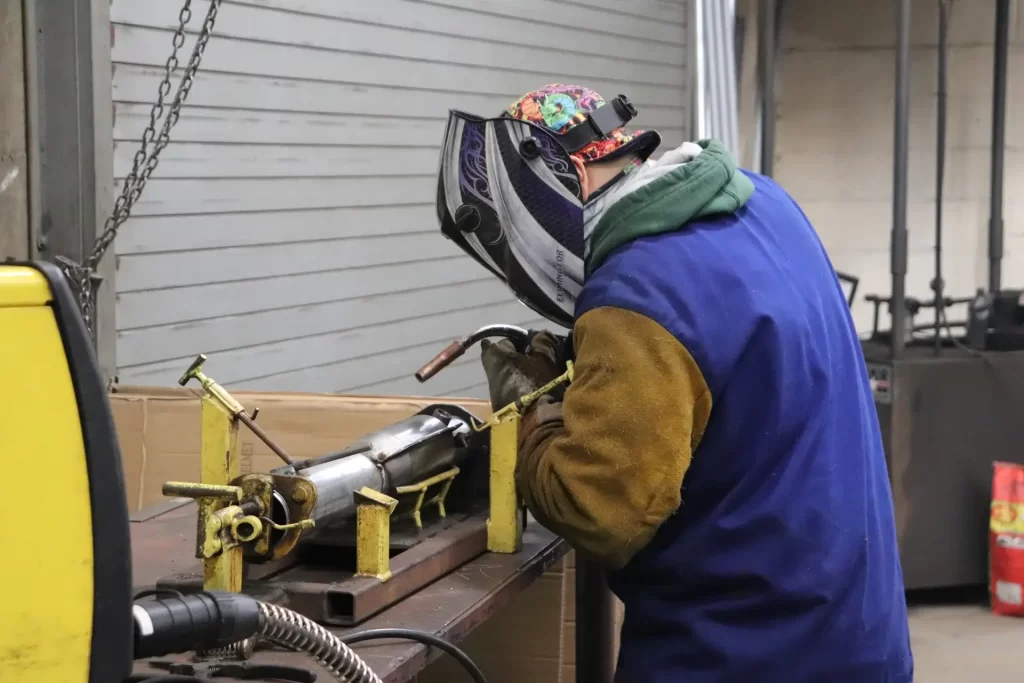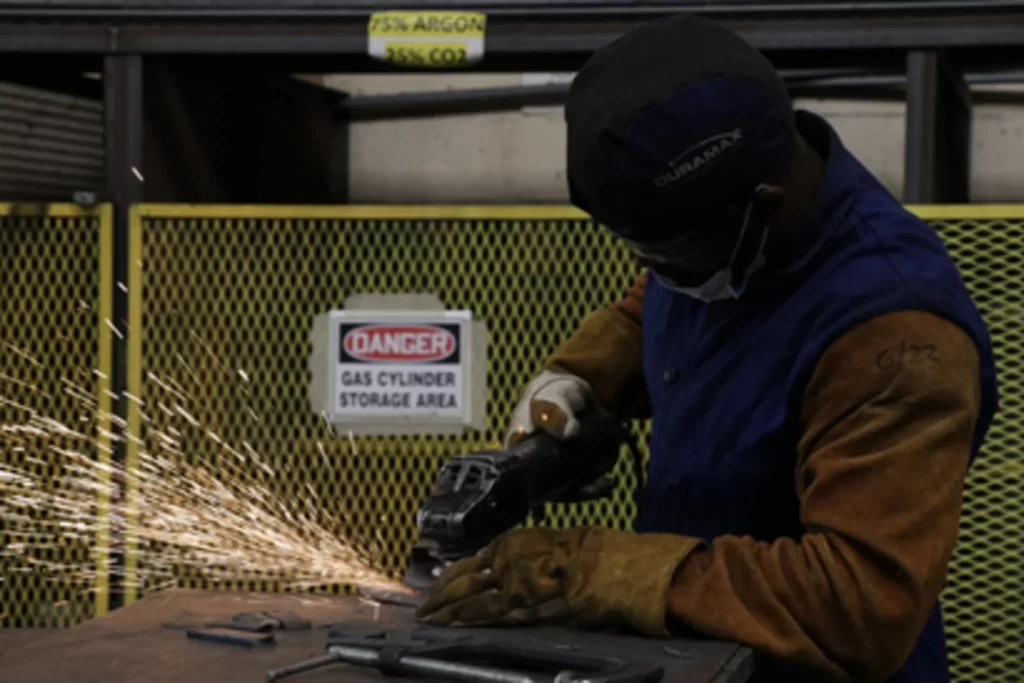Submerged Arc Welding (SAW) is a well-established and highly versatile tank welding technique. Submerged-arc welding involves the construction of an arc between an electrode and the workpiece. The procedure uses a flux to generate protective gasses and slag and to put alloying elements into the weld pool. Before welding, a thin layer of flux powder is put on the workpiece surface. The arc proceeds along the joint line, and as it does so, extra flux is recycled via a hopper. The remaining fused slag layers can be removed easily after welding. Heat loss is extremely low as the flux layer covers the arc. This elicits a thermal efficiency as high as sixty percent.
The SAW is commonly operated as a fully-mechanized or automatic procedure but can be semi-automatic. Welding parameters: arc voltage, current, and travel speed all influence bead shape, depth of penetration, and chemical composition of the deposited weld metal. Because the operator can not see the weld pool, greater dependence must be placed on parameter settings.

The procedure is generally restricted to flat or horizontal-fillet welding positions. Single or multiple electrode wire variations of the method exist. For example, submerged arc welding strip-cladding utilizes a flat strip electrode. DC or AC power can be utilized, and combinations of DC and AC are expected on multiple electrode systems.

The flux begins depositing on the joint to be welded in the welding job. Since the flux is the non-conductor of electricity when it is cold, the arc may be struck by touching the electrode with the workpiece. In this case, the arc is struck under cover of flux. Otherwise, flux is an insulator, but once it melts due to the heat of the arc. It becomes highly conductive; thus, the molten flux maintains the current flow between the electrode and the workpiece.
The arc length is retained constant by using the doctrine of a self-adjusting arc. If the arc length reduces, arc voltage will rise, and arc current and, therefore, the burn-off rate will boost, causing the arc to lengthen. The reverse happens if the arc length increases more than normal. A backing plate of copper or steel may be used to control penetration and to support large quantities of molten metal associated with the procedure.
The advantages of submerged arc welding are:
The following are the limitation of the submerged arc:
The submerged arc welding procedure is used for the following:
Read More